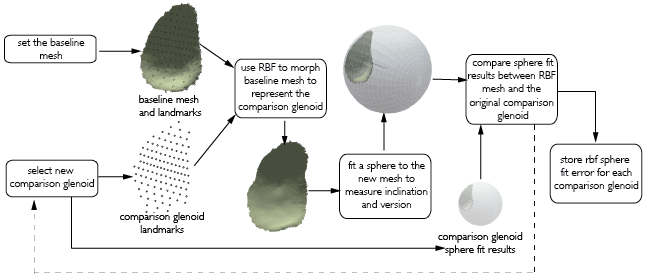Total Shoulder Arthroplasty is performed on patients to restore range of motion of the shoulder and decrease pain caused by osteoarthritis at the glenohumeral joint. The glenohumeral joint is a slightly unstable ball and socket joint, where muscles hold the humerus in contact with the glenoid, located on the scapula. Improper sizing or alignment of the implant can cause the surgery to fail to restore mobility to the shoulder or only restore mobility for a limited time. Additionally, placement of the glenoid implant on the scapula is complicated by the limited view available during surgery and the deformation of the glenoid caused by osteoarthritis. Implant designs must take into account the large amount of variability present in both intact and osteoarthritic joints. The purpose of this research is to provide a morphable glenoid representation for the scapula to assist with preoperative planning and implant design. CT scans of healthy and osteoarthritic glenoids were provided by Hershey Medical Center for this study. Principal component analysis and radial basis functions are used to represent a range of potential glenoid geometries, both with and without osteoarthritis. This parametric model can be used to guide the design and sizing of implants. This approach should be extensible to the modeling of other bony surfaces, which can improve both implant design and surgical procedure

